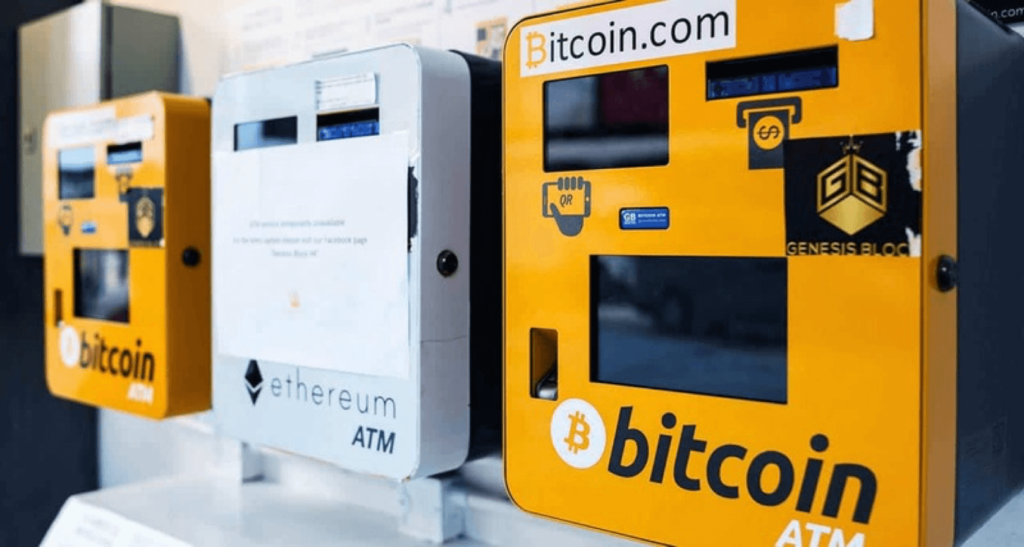Buying Bitcoin doesn’t have to involve navigating complex exchanges. In certain locations, there are dedicated ATMs machines designed to facilitate crypto transactions.

Typically, guides on buying bitcoin (BTC) recommend creating a cryptocurrency exchange account and acquiring a crypto wallet to store the digital currency. However, there is a more convenient method of purchasing bitcoin that doesn’t require a computer or a crypto exchange.
Bitcoin automated teller machines (ATMs) provide individuals with the opportunity to buy BTC by inserting cash or using their debit cards and following a few simple steps. Despite the growing presence of bitcoin ATMs in the industry, many still find the concept somewhat contradictory. How can a purely digital currency like bitcoin be dispensed by an ATM that traditionally handles physical currency?
It’s a valid question. Here’s what you need to know.
What are bitcoin ATMs?
Bitcoin ATMs allow people to purchase bitcoin, and sometimes other cryptocurrencies, using cash or debit cards. However, the term ATM can be misleading.
Bitcoin ATMs do not function like traditional bank ATMs that enable customers to manage their account funds. Instead, bitcoin ATMs serve as tools for making cryptocurrency purchases and, in some cases, sales, without requiring users to create an account.
Unlike centralized cryptocurrency exchanges, bitcoin ATMs offer users the option to hold their purchased bitcoin in a crypto wallet of their choice. They can wire the coins directly to their preferred wallet. Alternatively, if you use centralized exchanges like Binance or Coinbase (COIN), you can choose to have your coins sent to your exchange-provided “deposit address” and let the platform handle the custody of your assets.
The creation of a wallet is often a crucial part of the bitcoin ATM purchasing process. Unfortunately, scammers often target this step, as we’ll discuss later.
The first bitcoin ATM emerged in 2013 at a café in Vancouver, Canada. During that time, it was common for bitcoin enthusiasts to spend their digital currency in cafes or even trade 10,000 coins for two pizzas.
Since then, bitcoin ATMs have appeared worldwide. According to data from Coin ATM Radar, there are currently 36,610 bitcoin ATMs in 77 different countries. Genesis Coin leads as the largest bitcoin ATM manufacturer, with 15,140 machines. It is followed by General Bytes with 7,965 and BitAccess with 5,549.
Bitcoin Depot holds the largest market share among bitcoin ATM operators at 19.1%, followed by CoinCloud at 14.1%, and CoinFlip at 9.7%.
How to buy bitcoin from a bitcoin ATM
When encountering a bitcoin ATM, you’ll often notice a QR code displayed, prompting you to download a specific crypto wallet supported by the ATM.
Coinbase crypto wallet is a popular option, but there is a variety of other wallets to choose from.
If you haven’t done so already, download the wallet and follow any setup instructions provided.
Once your wallet is set up, it will generate a unique bitcoin address. This address is where the bitcoin ATM will send your purchased coins after the transaction is confirmed and finalized.
Bitcoin ATMs aim to offer an intuitive experience for users familiar with traditional ATMs. Simply follow the instructions displayed on the screen.
Machine functionalities may vary depending on the country and location. Some machines might require users to complete know-your-customer (KYC) verification steps before allowing the purchase. Minimum and maximum purchase amounts may also differ.
After setting up your wallet and obtaining your wallet address for incoming transactions, enter the amount you wish to purchase and input your crypto wallet address. Typically, this is done by scanning the QR code displayed on your phone screen, rather than manually typing it (which can lead to errors and permanent loss of funds).
The transaction typically takes around 10 minutes to complete, although it may occasionally take as long as an hour.
Advantages and disadvantages of bitcoin ATMs
Bitcoin ATMs are an excellent entry point into the world of cryptocurrency for users who are not technologically inclined. Fortunately, this convenience does not compromise security since most ATMs do not store users’ KYC information, bank details, or private keys.
However, there are some clear disadvantages. Bitcoin ATMs often charge exorbitant fees, ranging from 7% to 20% in some cases. Additionally, there are stricter limits on purchases compared to cryptocurrency exchanges. Furthermore, in case of any issues, there is usually limited or no customer support available.
Beware of scams involving bitcoin ATMs
There are two common scams associated with bitcoin ATMs.
One scam involves scammers advertising goods for sale on platforms like eBay, Craigslist, or Gumtree. These items are typically priced significantly lower than the market rate, enticing potential buyers to make contact. The scammers then instruct victims to make the purchase using cryptocurrency by depositing funds into a bitcoin ATM and sending the crypto to the scammers’ wallet address. Once the transaction is complete, the scammers disappear. This scam is popular due to the irreversible and largely unregulated nature of blockchain-based payments, making it nearly impossible to reverse the transaction.
Another type of bitcoin ATM scam is more complex and malicious. Scammers target individuals seeking employment and offer them trial work. During the trial, scammers send money to the victim’s bank account and instruct them to withdraw the funds and convert them into bitcoin at a bitcoin ATM, then transfer the cryptocurrency to the scammers’ address. However, a few days later, the money sent to the victim’s account is reversed because it originated from a stolen account. This leaves the victim’s account with a negative balance. There have been cases of individuals being swindled out of funds through this method, as shared in a Reddit post.
Overall, if you want to purchase a reasonable amount of bitcoin in a relatively private manner and are willing to accept higher fees, a bitcoin ATM could be a suitable choice for you, provided there are machines available in your area. Otherwise, using a cryptocurrency exchange or purchasing bitcoin through apps on your smartphone, which you likely already have, are also good options.